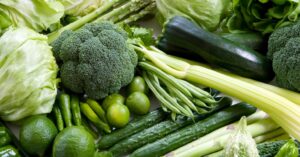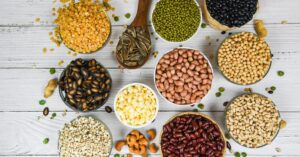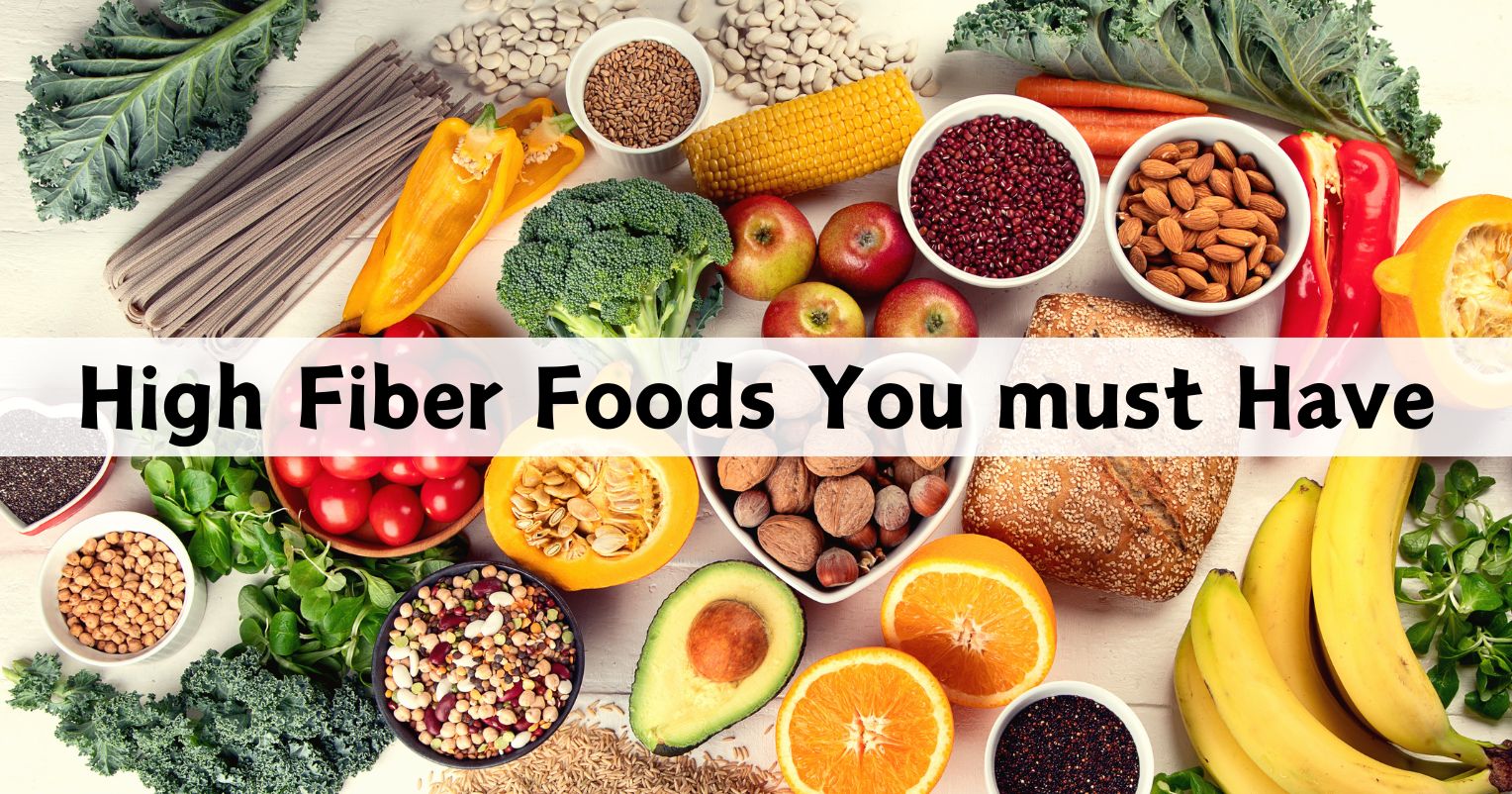It’s no secret that the path to good health is created with good nutrition, but did you know that one of the most important collaborator in achieving good nutritional diet is something as simple as fiber? Yes, you heard it right! Today, we’re going to look for the high fiber foods, their monumental benefits, and how you can seamlessly include them into your diet and daily life. So, get set and ready to discover the health secret that could change your life.
Fiber plays an important role in Good Health
Fiber is not just a dietary recommendation but its a building block for a good health. This miraculous nutrient plays a very important role in maintaining digestive health, aiding in weight management, and even preventing diseases. Fiber helps to keep our digestive system running smoothly, preventing constipation, and has been linked to a lower risk of heart disease, diabetes, and certain types of cancer. Moreover, fiber-rich foods can help you feel fuller for longer, supporting weight management efforts. In Short, fiber is a superhero nutrient that your body needs to flourish and healthy.
Common Myths/Misconceptions About High Fiber Foods
Before we get into fiber-rich foods, let’s bust some of the common myths or misconceptions. Firstly, the idea that “All fiber is the same” is extremely wrong. Fibers are categorized in two forms – soluble and insoluble, each serving different health functions. Another one is that “Only older adults need high fiber.” This is a misconception as fiber is very important for the people of all age groups. Lastly, concerns that fiber causes discomfort are mainly when you increase fiber intake all of a sudden. Gradual changes are key!
Top High Fiber Foods You Should Know About
1. Vegetables

- Broccoli: A fiber powerhouse, providing 2.4 grams per cup.
- Brussels Sprouts: Offering about 4 grams of fiber per cup.
2. Fruits

- Raspberries: Win the fiber game among fruits with 8 grams per cup.
- Avocado: Not only rich in healthy fats but also offers around 10 grams of fiber per fruit.
3. Legumes

- Chickpeas: A versatile legume packing about 12.5 grams of fiber per cup.
- Lentils: With 15.6 grams per cup, they’re a fiber-rich choice for any meal.
4. Whole Grains

- Oats: A breakfast champion, offering 10.1 grams of fiber per cup.
- Quinoa: Besides being a protein gem, it provides 5 grams of fiber per cup.
5. Nuts and Seeds

- Chia Seeds: Astonishingly high in fiber, with 10.6 grams per ounce.
- Almonds: Nutritious and fibrous, with 3.5 grams of fiber per ounce.
How you can include High Fiber Foods Into Your Daily Food?
Including more fiber into your meals isn’t that difficult. Start your day with a bowl of oatmeal topped with raspberries and chia seeds for a fiber boost. For lunch, a quinoa salad with avocado, chickpeas, and an array of vegetables can be both satisfying and fibrous. Snack on almonds or make a smoothie with fruits high in fiber. Remember, increase your fiber intake gradually and drink plenty of water to avoid digestive discomfort. Sudden Change or increase in fiber may lead to Indigestion problems so increase it gradually over a period.
What are the Benefits of High Fiber Foods?
- Weight Management: Fiber-rich foods help in feeling fuller for longer periods, reducing overall calorie intake by curbing overeating and snacking on unhealthy options.
- Digestive Health: A high fiber diet promotes regular bowel movements and prevents constipation by adding bulk to the stool, making it easier to pass.
- Blood Sugar Control: Fiber, especially soluble fiber, slows down the absorption of sugar, helping in maintaining more stable blood glucose levels, which is beneficial for people with diabetes or at risk of developing the condition.
- Heart Health: Consuming ample fiber can lower bad cholesterol levels (LDL) in the blood, reducing the risk of heart disease and stroke by preventing the buildup of plaque in the arteries.
- Gut Health: A diet high in fiber supports a healthy gut microbiome by feeding beneficial bacteria, which is crucial for overall health, including immune function and inflammation reduction..
How much Fiber You should take?
Recommended Fiber intake for an Adult by American Government is as follows:
Recommended Fiber intake for Adults by American Government |
|||
|
Men ages 19–50 |
Men over age 50 |
Women ages 19–50 |
Women over age 50 |
|
31 to 34 grams |
28 grams |
25 to 28 grams |
22 grams |
| Source: Dietary Guidelines for Americans 2020–2025 | |||
Living a High Fiber Lifestyle: Beyond Just Food
Starting a high-fiber diet is stepping into a world of great health benefits. From supporting your digestive system to aiding in weight management and disease prevention, the power of fiber is undeniable. I encourage you to start incorporating these high-fiber foods into your diet today but slowly-slowly and experience the transformative effects on your health.
FAQs
- Can I get enough fiber from fruits and vegetables alone? A: While fruits and vegetables are excellent sources of fiber, diversifying your sources with legumes, whole grains, nuts, and seeds ensures you benefit from both soluble and insoluble fibers.
- How much fiber do I need daily? A: Adults should aim for 25 to 38 grams of fiber per day, according to dietary guidelines. However, individual needs may vary.
- Will increasing my fiber intake cause bloating? A: Initially, a sudden increase in fiber might lead to bloating. To minimize discomfort, increase your intake gradually and stay hydrated.
- What high fiber foods aid in weight loss? A: For weight loss, focus on oats, legumes (like lentils), avocados, and pears. These foods are filling and low in calories. You can also check our Article on “How you can loose weight in 30 Days“.
- How to increase fiber intake without gas or bloating? A: Increase fiber gradually, drink plenty of water, and start with small portions to allow your digestive system to adjust without discomfort.
- Can a high fiber diet benefit diabetes or heart disease? A: Yes, high-fiber foods, especially those with soluble fiber like oats and legumes, can lower blood sugar and cholesterol levels, aiding in the management of diabetes and heart disease.
Remember, the journey to a healthier body is a marathon, not a sprint. Including high-fiber foods into your diet is a step in the right direction. Stay Connected for many Nutritional value to come and Lets Cheer to a Healthy Life .
food high in fiber, foods high in fiber, foods high in soluble fiber, foods that are high in fiber, foods with high fiber, good health, healthy diet, healthy food, High Fiber, high fiber food, High Fiber Foods, high fiber low carb foods



